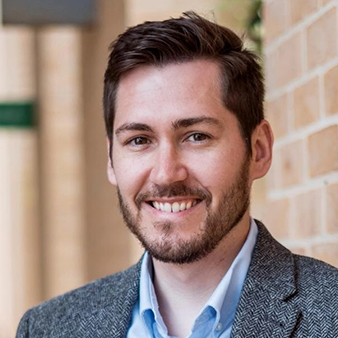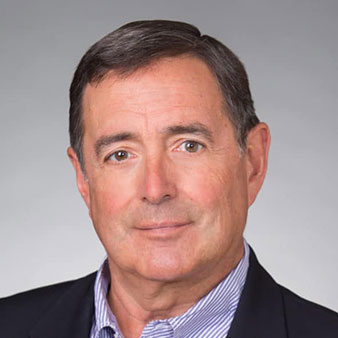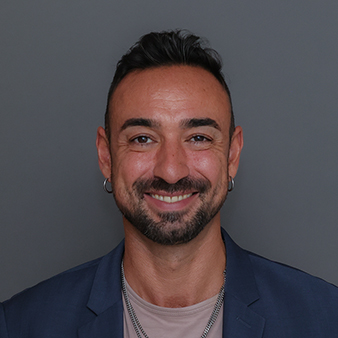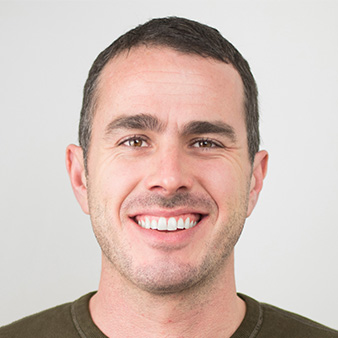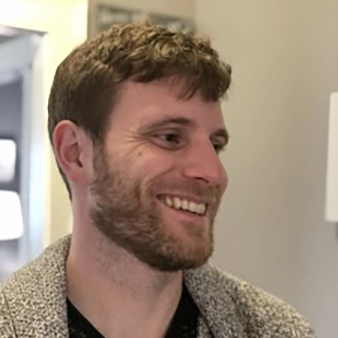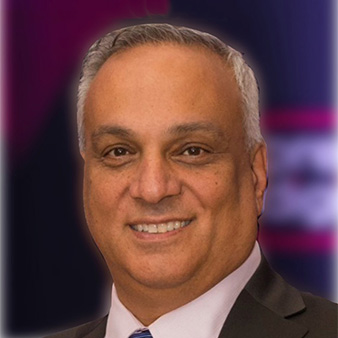| 9:00-10:00am | Registration and Breakfast |
| 10:00-10:05am | Opening Remarks Scott McDonald, Ph.D. – President & CEO ARF |
| 10:05-10:40am | Overview of Attention Phase II Findings The second phase of the ARF Attention Initiative delves into the impact of creative elements on attention in advertising. We explore both consistencies and variations within and across different methods to determine if these variations stem from measuring distinct dimensions of what is broadly termed “attention.” Our analysis addresses several key questions: How does emotion differ from attention? Are passive and active attention fundamentally different? How similar are findings of survey and recall methods from those of eye tracking and biometric techniques? Tracy Adams, Ph.D. – Director, Research Programs, ARF
Paul Donato – Chief Research Officer, ARF |
| 10:40-10:55am | Fireside Chat: Feedback from Attention Phase II In this fireside chat, insights from the second phase of the ARF’s Attention Initiative will be discussed, focusing on how these findings influence the industry’s ongoing efforts to effectively measure attention. As the industry seeks to understand and quantify attention’s impact, the intricate nature of how attention functions and influences consumer behavior continues to be a central focus of study and discussion.
Gabriel Dorosz – Executive Director, Audience Strategy & Insights, New York Times Advertising
Moderator: Paul Donato – Chief Research Officer, ARF |
| 10:55-11:15am | Activating Attention What are the current challenges in predictive attention analytics, shedding light on the hierarchy and key signals that govern holistic attention? Hear an analysis of the implementation of practical attention strategies across various mediums – Display, Facebook, and Video – to reveal insights on how predictive attention AI can help us harvest effective outcomes from different ad formats and channels. Markku Mäntymaa – Acting CEO, Viomba |
| 11:15-11:30am | Morning Break |
| 11:30-11:50am | How Ad Formats Impact Consumer Behavior—And How Marketers Can Plan Accordingly The landscape of digital marketing has become increasingly complex, in part driven by the proliferation of new ad experiences and formats across platforms. These new ad experiences drive value in unique and different ways that when combined can increase the overall value of your marketing. Yet, it remains common to take a one-size-fits all approach to planning and measuring ad effectiveness across experiences and formats, creating challenges for marketers in understanding the full picture of their marketing effectiveness. In this session, Meta, will share findings from a recent study that helps to categorize and evaluate video ad formats across Stream, Short Form, and Feed. Oxford University will also share research to develop and validate these categorizations, and the very real effects they have on consumer attention. Sophie MacIntyre – Research Scientist, Meta
Jason Bell – Associate Professor of Marketing, Oxford University |
| 11:50am – 12:20pm | Role of Emotions and Metaphors in Creating Sticky Brand Impressions Memory plays a critical role in the success of an advertisement. Though marketers often seek to create memorable brand impressions through various advertisements, measuring the strength and reliability of these associations over time has remained a challenge. Using a combination of behavioral and neuroscience measures, we demonstrate that the use of metaphors in advertising creates stronger and longer-lasting memories of companies’ brand and messaging, particularly in comparison to functional and emotional advertisements. Vinod Venkatraman, Ph.D. – Associate Professor in Marketing, and Director of the Center for Applied Research in Decision Making, Fox School of Business, Temple University |
| 12:20 – 12:45pm | Universal Guide to Attention, Emotion, Persuasion and Memory in Advertising The ARF Cognition Council is planning to publish a comprehensive guide to the roles of attention, motivation, emotion, memory, and persuasion in advertising, based on an extensive review of the literature, consultation with academic experts, and the members’ own expertise. Its purpose is to provide research and advertising professionals with a foundation of knowledge of cognitive processes that they can apply in developing advertising strategy and the research to support that strategy. Three members of the Council who wrote portions of this guide will preview it here, focusing on the relationship between attention and the other cognitive processes that come into play in responding to advertising. Idil Cakim – SVP, Research & Insights, Audacy
Kimberly Rose Clark – Senior Lecturer Dept. Of Psychological and Brain Services, Dartmouth College
Manuel Garcia-Garcia – Global Lead of Neuroscience, Ipsos Moderator: Vinod Venkatraman – Associate Professor in Marketing, and Director of the Center for Applied Research in Decision Making, Fox School of Business, Temple University |
| 12:45 – 1:45pm | LUNCH |
| 1:45 – 2:10pm | Are We Ready for Attention Standards? What is the feasibility and need for establishing industry-wide standards to measure and manage consumer attention in advertising? What methodologies are needed for quantifying attention effectively? What is the purpose of the measures? What does an “effective” metric measure? Do the various measures have the same or different purposes? What’s the balance between marketing effectiveness and respecting audience boundaries? Should attention be an isolated metric or combined with other factors like emotion, motivation and memory? How might standards evolve with advancements in data analytics and AI, and their potential to reshape marketing strategies? Angelina Eng – VP Measurement, Addressability & Data Center, IAB
Burak Kurtun – Managing Director, Marketing Science, OMD USA
Daniel Slotwiner – SVP, Attention, DoubleVerify
George Ivie – CEO and Executive Director, MRC
Moderator: Scott McDonald, Ph.D. – President & CEO, ARF |
| 2:10 – 2:30pm | Attention Measurement: From Theory to Practice In today’s rapidly evolving digital landscape, capturing and maintaining attention is more crucial than ever. This session dives into the innovative methodologies and technologies that are shaping how we understand, measure, and leverage attention within digital marketing and will bridge the gap between abstract theoretical concepts and their real-world applications, by showcasing the latest research findings, practical tools, and a proof of concept that illuminate the path towards scaled media measurement. Takeshi Tawarada – Research & Insights Lead, Augmented Reality & Attention, Snap Inc.
Blaise Lucey – Global Marketing Director, Lumen |
| 2:30 – 2:50pm | ATLAS – How Attention on Vertical Video Ads Triggers Purchase ATLAS (American Thought Leadership in Attention Study) is a new study that examines the impact of creative and media attention on purchase. The study shows how brands generate different qualities of media attention on seemingly similar social media platforms that offer full-screen vertical video ad formats. Active and passive attention shape the effectiveness of brand messages. Branded moment exposure results in measurable brand effects that differ between small and large brands across two verticals. The study explores what level and type of attention is necessary to stimulate real purchase effects in an authentic online shopping environment. For marketers to consider where to place creative assets for maximum impact and how to leverage different windows of opportunity for consumer persuasion to optimize spending for attention efficiency. Jeff Bander – President and Chief Revenue Officer, eye square inc.
Nuria Sichalla – Senior Research Consultant, eye square inc. |
| 2:50 – 3:10pm | Validating New Attention Measures In this presentation, hear an overview of a new project which will seek to validate new attention measures using ground truth. The initiative relies on expert coding of over 300 ads to select eight ads characterized by low attention (non-attention) and eight by high attention. Preliminary results from the first set of vendors to participate will be shared and results explored. Dr. Duane Varan – CEO, MediaScience
Steven Bellman – Senior Marketing Scientist, Ehrenberg Bass Institute |
| 3:10-3:30pm | Afternoon Break |
| 3:30 – 3:50pm | The Power of Precision: From Attention Insights to Programmatic Wins In this session we examine a comprehensive case study where leaders from Adelaide, LinkedIn, and Google Display and Video 360 will chart the evolution of a groundbreaking strategy to quantify the impact of attention and identify ideal media quality thresholds for LinkedIn. Armed with these insights, LinkedIn recently deployed a custom bidding algorithm designed to increase efficiency and performance dynamically. Attendees will hear the results and learnings from our collaboration, providing advertisers with a roadmap for pushing the boundaries of attention activation. Marc Guldimann – CEO, Adelaide
Casper Verhoofstad – Group Product Manager, Google
Paolo Provinciali – VP of Marketing Growth, Performance, & Operations, LinkedIn |
| 3:50 – 4:10pm | Further Developments on the use of GSR as a Measure of Impression Quality Galvanic Skin Response (GSR) data measured from panels of thousands of households who are daily exposed to media content is Mediaprobe’s approach to measuring impression quality in video and audio formats. Explore the latest results on a multi-year roadmap to transforming raw GSR data into an objective and monetizable measure of emotional engagement, determining how much emotional engagement to media content impacts ad effectiveness, modelling the monetary value of emotional engagement and; build prospective models of ad effectiveness based on the typical emotional engagement patterns to different genres and shows, and across different audiences. Pedro Almeida – CEO, Mediaprobe |
| 4:10-4:30pm | Neuro Measures of Content & Platform Impact on Sales Lift This session builds on Wharton Neuroscience’s work predicting and quantifying sales lift for premium and nonpremium content environments. Brain measures explain why 1-2 seconds of attention can help activate current customers but not acquire brand growth. This scientific revelation has dramatic implications for the balance of television and digital media investments Bill Harvey – Executive Chairman, Bill Harvey Consulting
Michael Platt – Director, Wharton Neuroscience Initiative, University of Pennsylvania
Mainak Mazumdar – Chief Research and Analytics Officer, FOX |
| 4:30 – 4:45pm | Closing Remarks Scott McDonald, Ph.D. – President & CEO ARF |
| 4:45-6:00pm | Cocktail Reception |





